BEVERLY HILLS: VANISHED PAST
Change is inevitable. Many of the beloved buildings and businesses that once defined Beverly Hills are now gone. But they are not forgotten. Move the “slider” between the before and after pictures below to compare the vanished past with how Beverly Hills looks today.
NORTH RODEO DRIVE

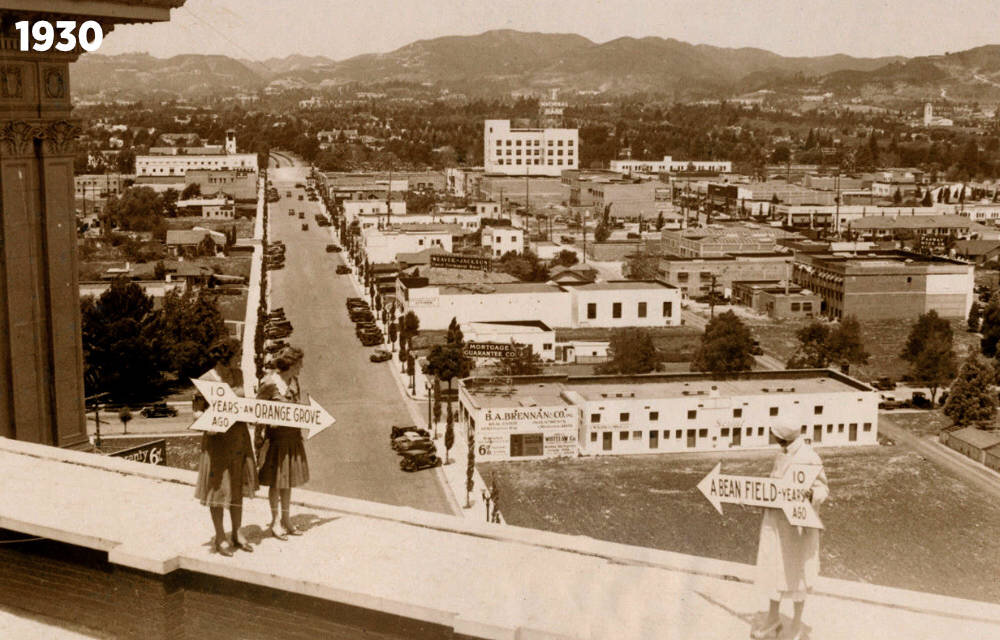
NORTH RODEO DRIVE - The view looking north from the top of the Beverly Wilshire Hotel shows the transformation of Rodeo Drive from lima bean fields and orange groves to one of the most famous streets in the world.
NORTH BEVERLY DRIVE
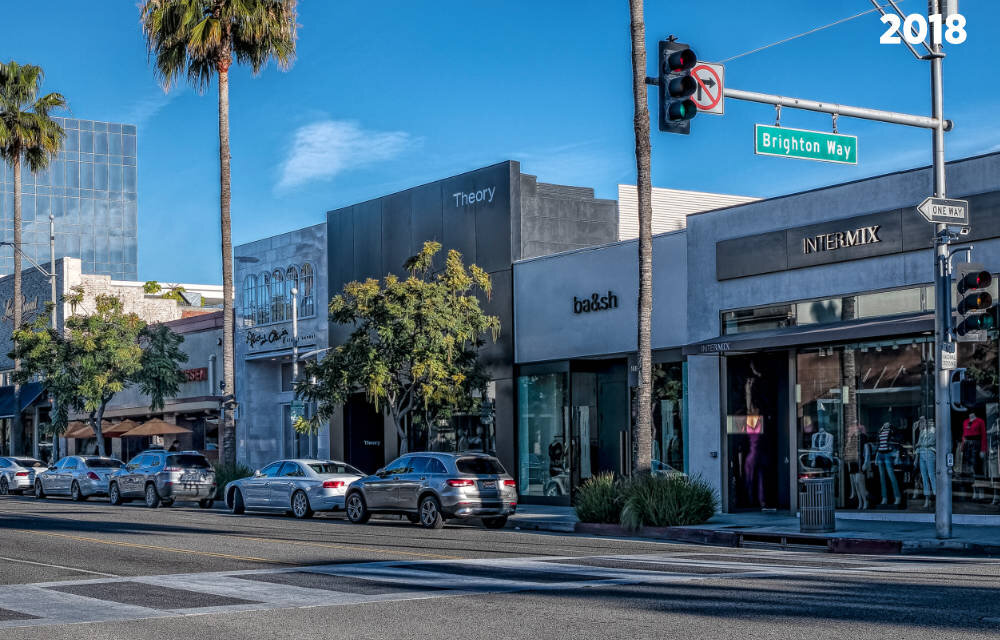
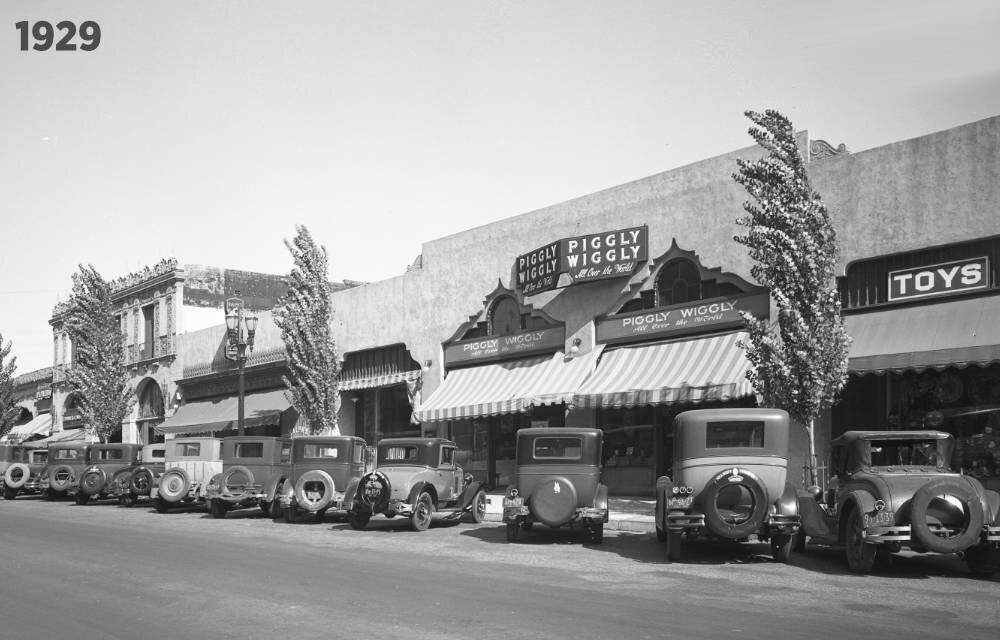
NORTH BEVERLY DRIVE - A century ago, the shops on North Beverly Drive catered to local needs. There was a J.J. Newberry’s five-and-dime, a pet store, drug store, candy store, toy store, and neighborhood grocery. Businesses were tucked away inside courtyards with ornate facades. But even then there was a parking shortage. The more things change, the more they stay the same.
SUNSET BOULEVARD BRIDLE PATH
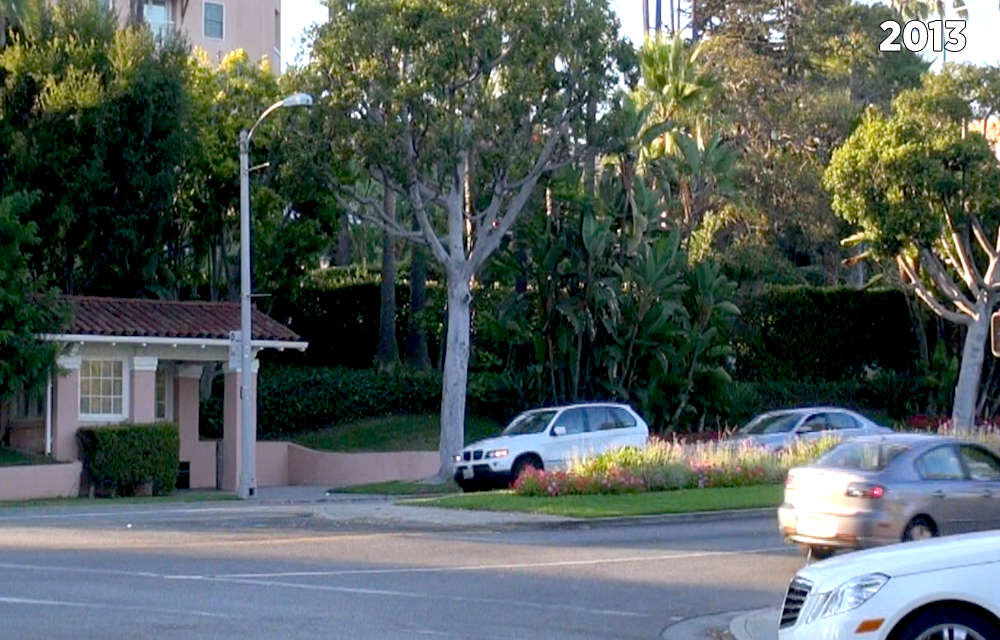
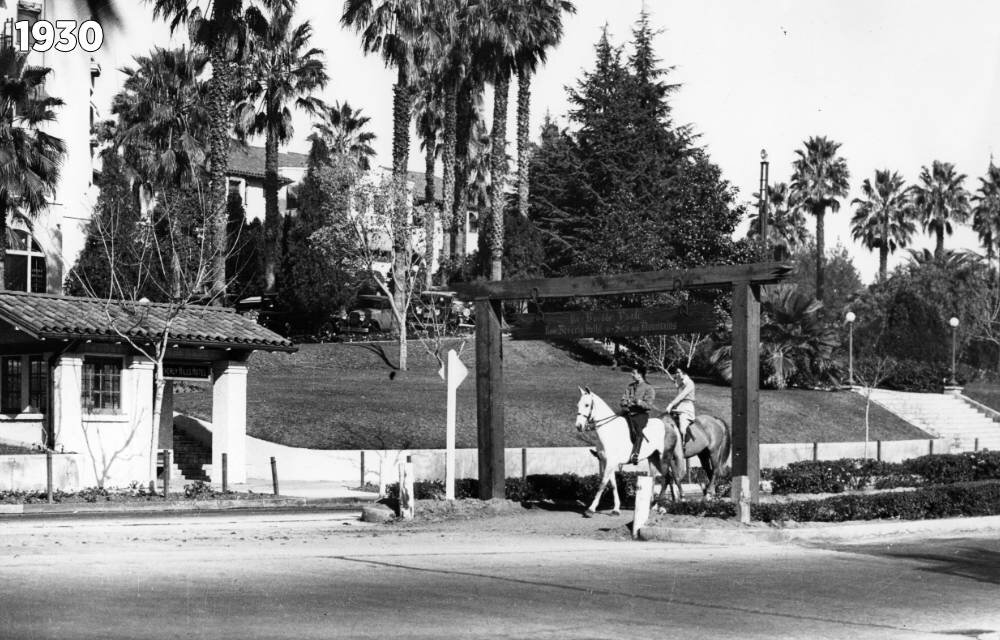
SUNSET BOULEVARD AT NORTH CANON DRIVE - For decades, the green strip dividing Sunset was a bridle path. Back then, most houses had their own stables and residents could ride into town to do their grocery shopping. The pink bus stop shelter on the north side of Sunset is the last remnant of the “dinky train” that brought visitors to the Beverly Hills Hotel 100 years ago.
THE LUAU RESTAURANT
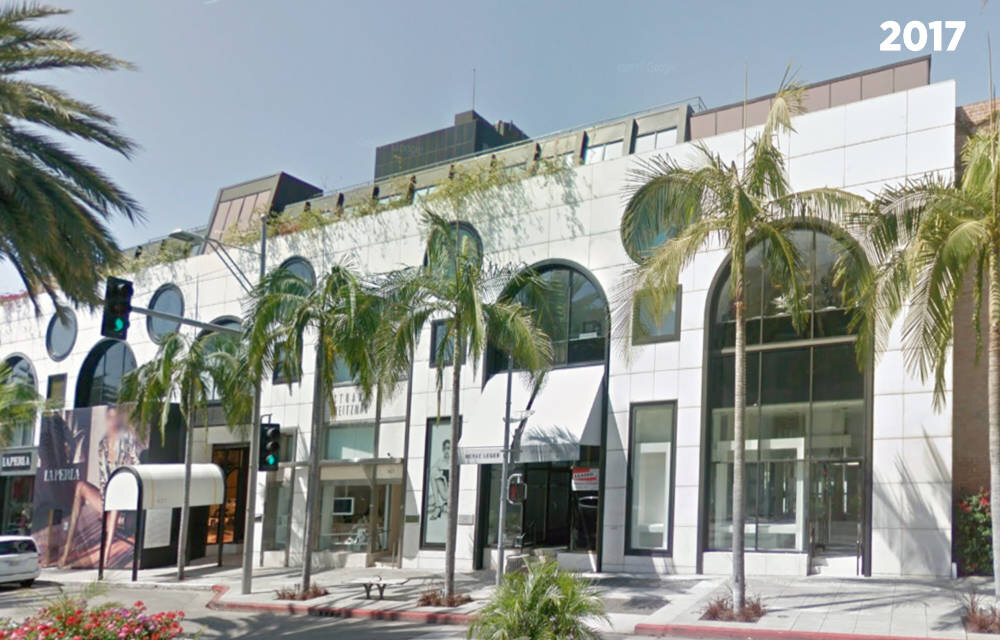

THE LUAU RESTAURANT / 421 N Rodeo Drive - The Luau was owned by actress Lana Turner’s ex-husband, Steven Crane. Their daughter, Cheryl, notorious for stabbing Turner’s gangster boyfriend, was the restaurant’s hostess. The menu read, “Aloha! You have just crossed into Paradise.” In addition to fish-filled streams and ornate bridges, The Luau had an indoor lagoon with miniature ships.
SECURITY-FIRST NATIONAL BANK & BEVERLY HILLS TRAIN STATION
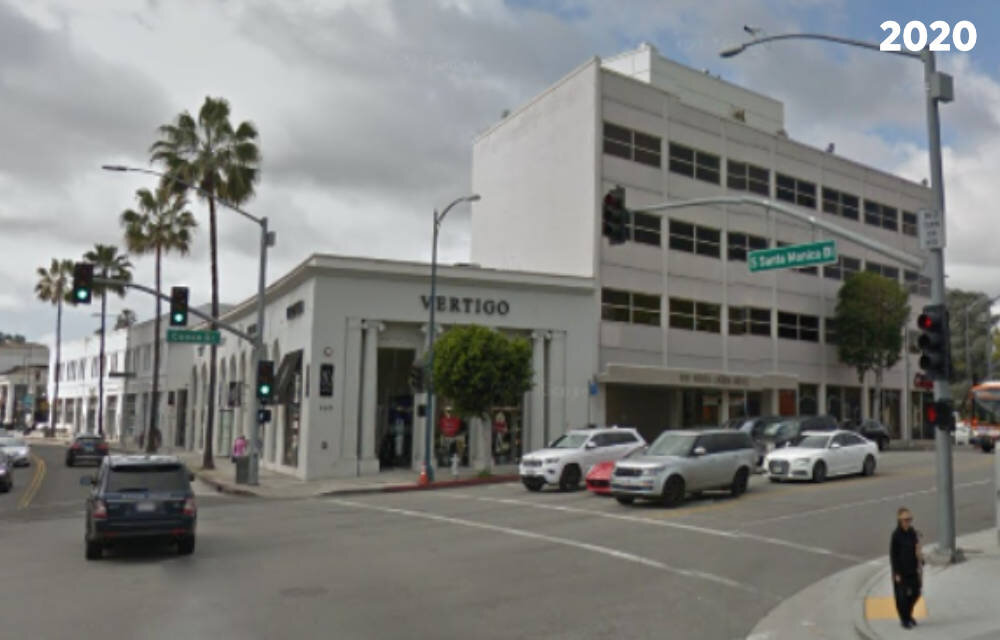
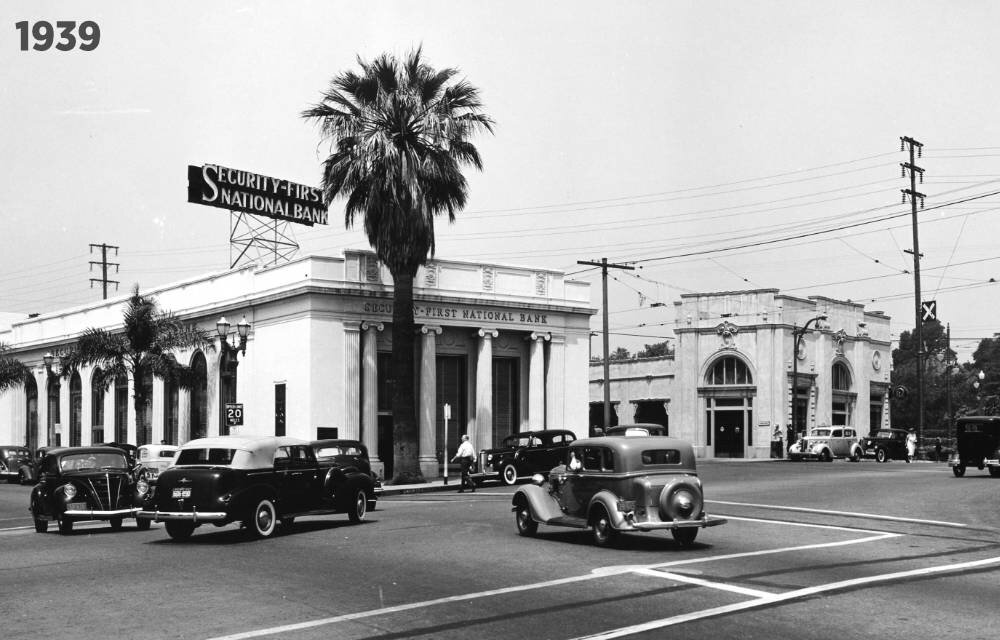
CANON DRIVE AT SOUTH SANTA MONICA BOULEVARD - The train station (right), which served as gateway to the city, is long gone, but the distinctive columns that graced Security-First National Bank (left) can still be seen today. The station, bordered by the famous Lily Pond and Beverly Hills sign to the north, and Post Office and City Hall to the east, was the city’s center.
FIRST COMMERCIAL BUILDING
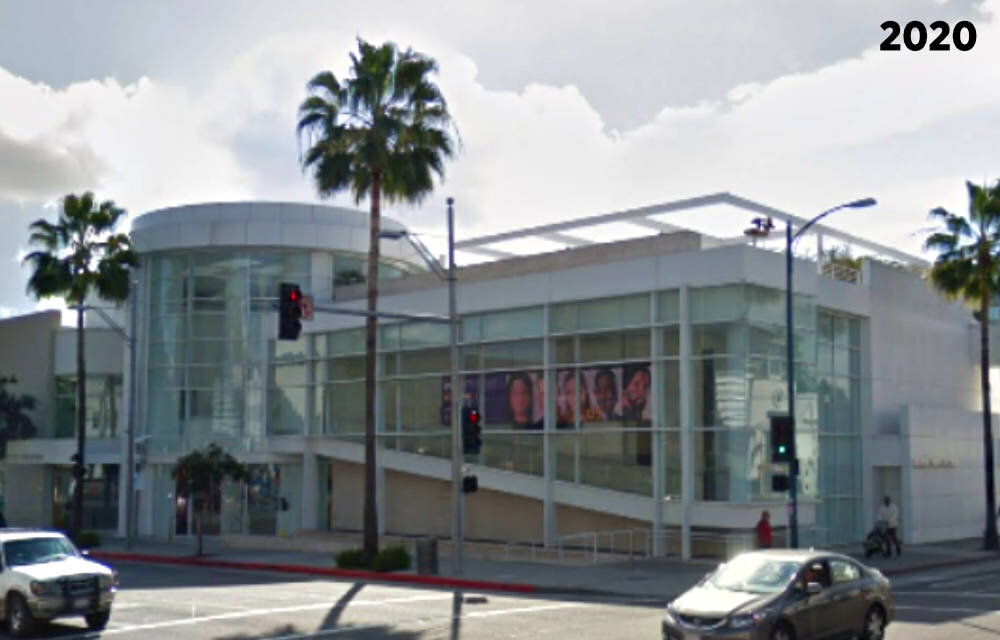
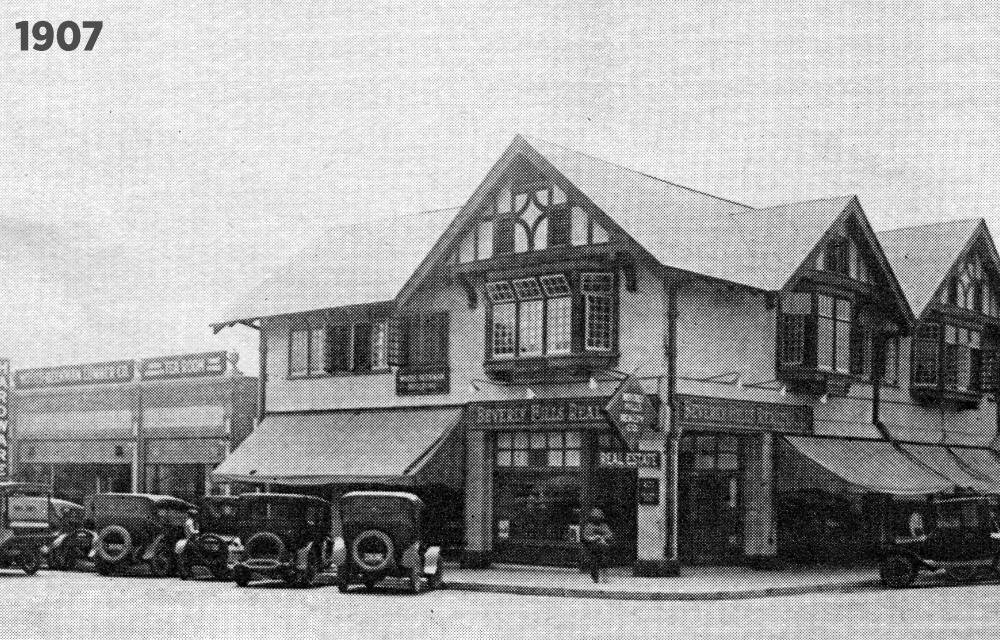
FIRST COMMERCIAL BUILDING / 465 N Beverly Dr - The first commercial building in town opened in 1907 as a real estate office and hardware store. The location later became the First National Bank, the Bank of America, and finally, the Paley Center for Media, designed by renowned architect Richard Meier who was the creative mind behind the Getty Center.
BEVERLY DRIVE AT WILSHIRE BOULEVARD
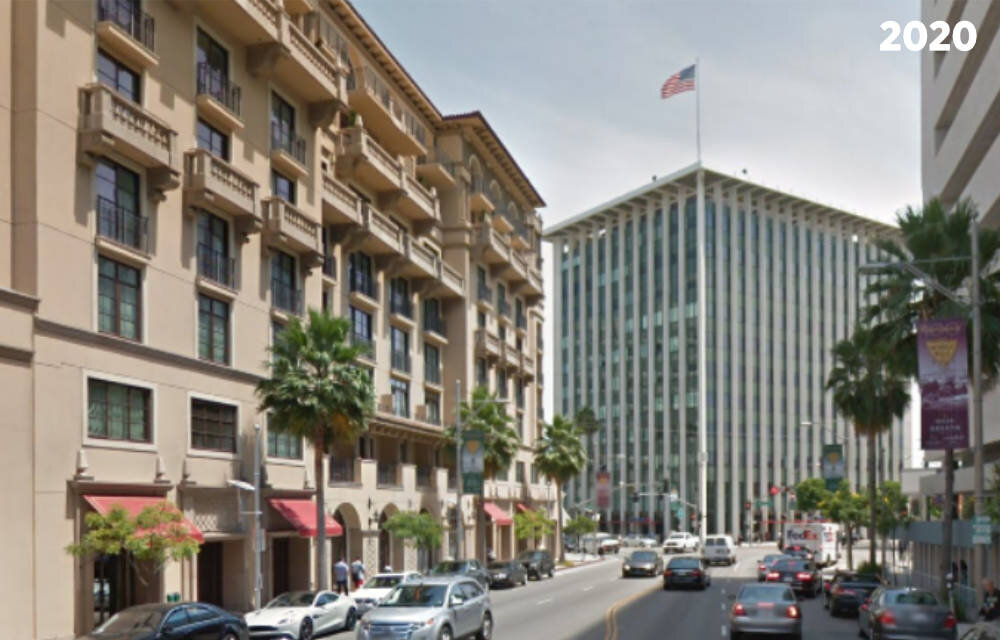
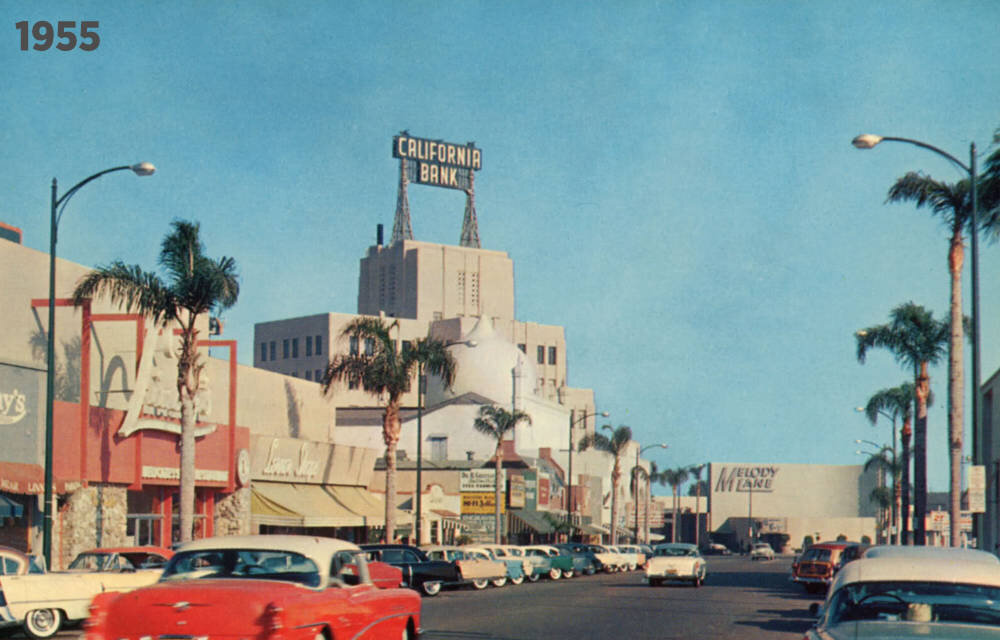
BEVERLY DRIVE AT WILSHIRE BOULEVARD - The red building on the left, Linny’s Deli, served the best corned beef sandwich in town. The Melody Lane coffee shop was on Wilshire and the white, onion-domed building in the middle of the picture was the Beverly Theater. Designed in the Indo-Chinese style, the opulent interior included Arabian Nights murals. It closed in 1977 and the space was taken over by the fashionable Fiorucci clothing store. The building was eventually demolished in 2005.
WARNER THEATER
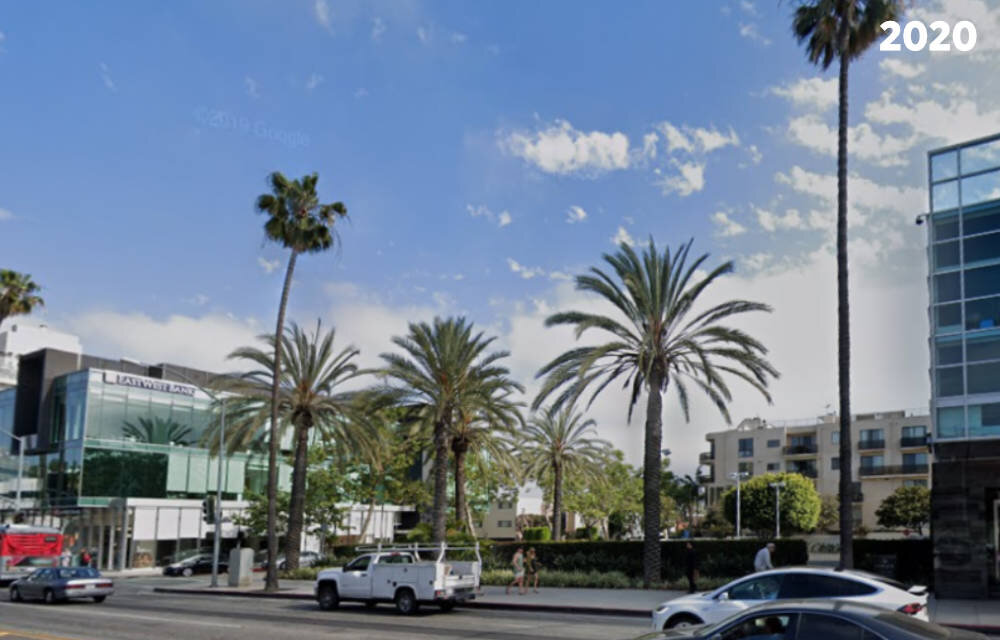
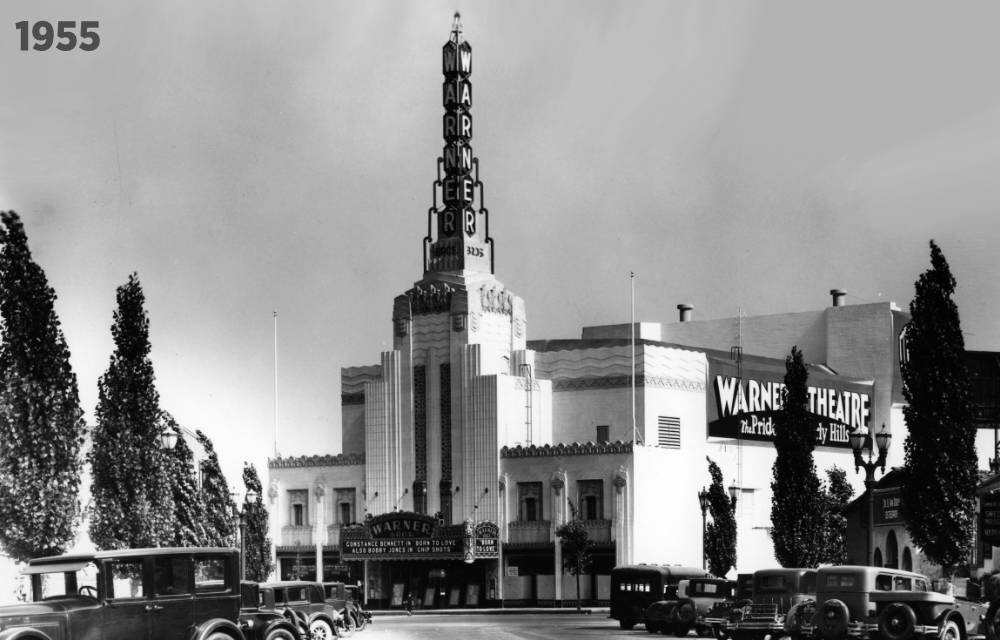
WARNER THEATER / 9404 Wilshire Blvd - The Warner Beverly Hills theater opened in 1931 and had a glorious career over many decades as a deluxe venue for prestige films. It was torn down in the late ‘80s to make room for a parking lot.
DOLORES DRIVE-IN
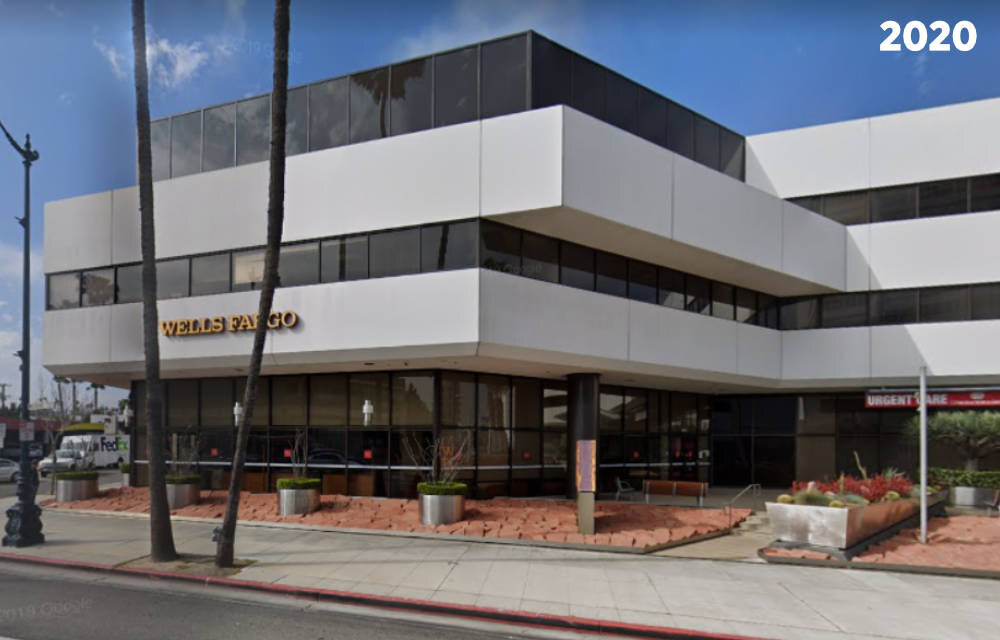
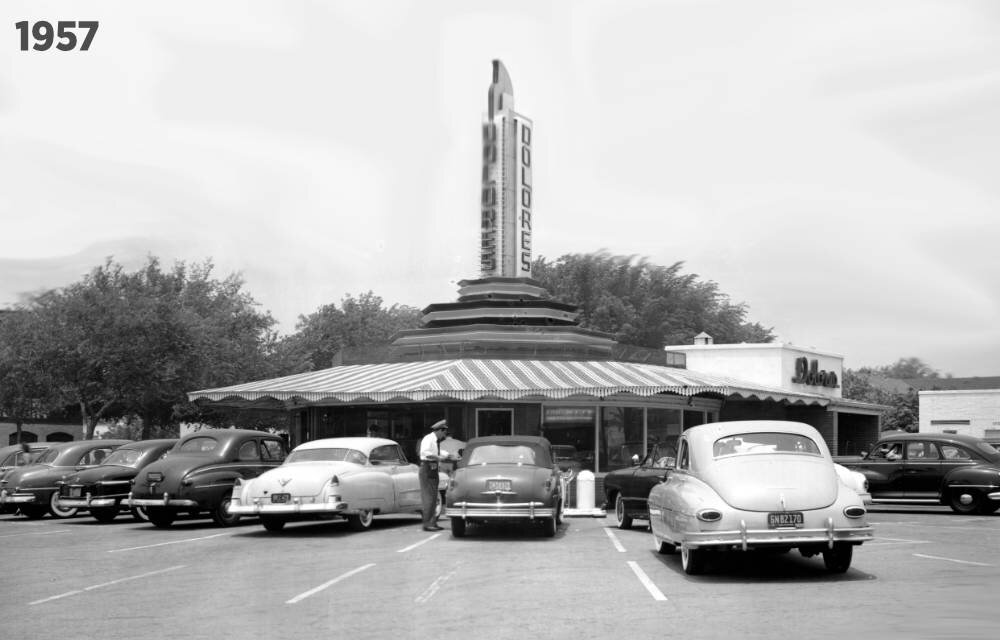
DOLORES DRIVE-IN / 8531 Wilshire Blvd - Dolores Drive-In opened in 1946 catering to L.A.’s growing car culture. Customers could enjoy delicious meals without ever leaving the comfort of their automobiles. Locals regularly ordered a Jumbo Jim Doubledecker burger with extra Z sauce, Suzie Q’s (french fries), and a cherry-lime rickey all for less than a dollar. Dolores closed in 1981.
Joseph Reppac Famous Spaghetti Restaurant

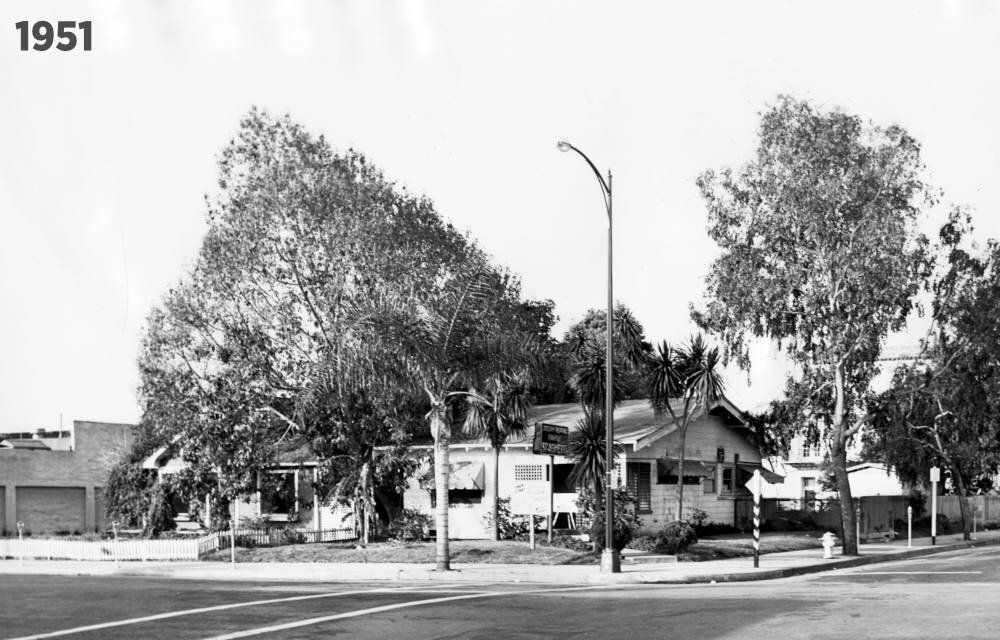
JOSEPH REPPAC FAMOUS SPAGHETTI RESTAURANT / Rodeo Drive & Brighton Way - In the ‘50s, Rodeo Drive was a mix of businesses and small houses, some of which became restaurants like Joseph Reppac’s Famous Spaghetti Restaurant. When Gucci and other designer brands arrived in the late ‘60s, Rodeo transformed from a hang-out for locals to the glamour capital of the world.
the BROWN DERBY RESTAURANT

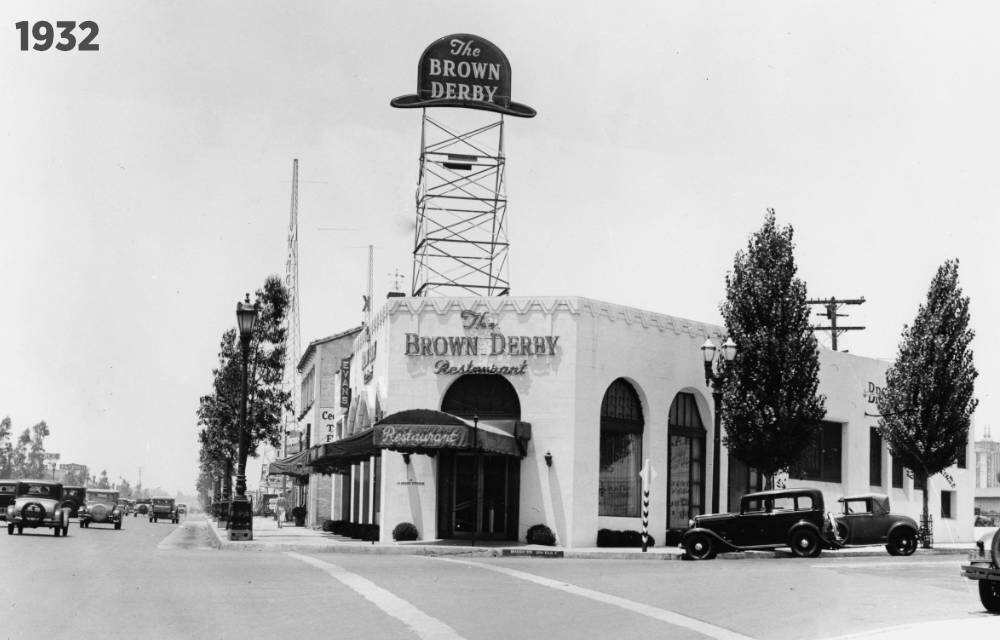
BROWN DERBY RESTAURANT / 9537 Wilshire Blvd - The Brown Derby restaurants, famous for the stars in the booths and the star caricatures on the walls, were run by Robert Cobb, inventor of the Cobb Salad. The Beverly Hills Brown Derby opened in 1931 and served its last meal in 1982. The One Rodeo building that replaced it has a derby-shaped dome in honor of the legendary restaurant.
WILSHIRE COFFEE POT
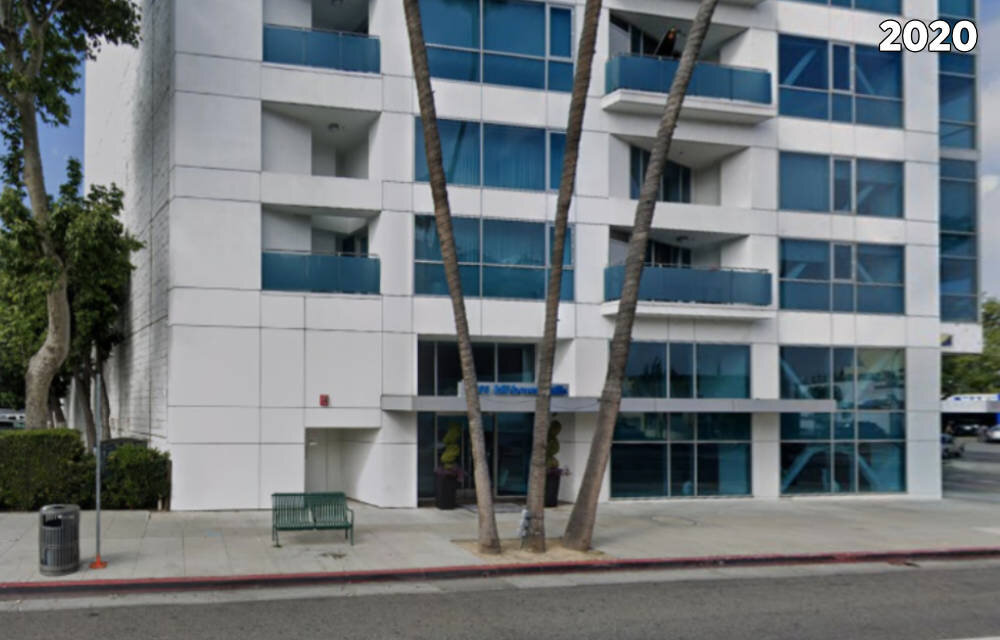
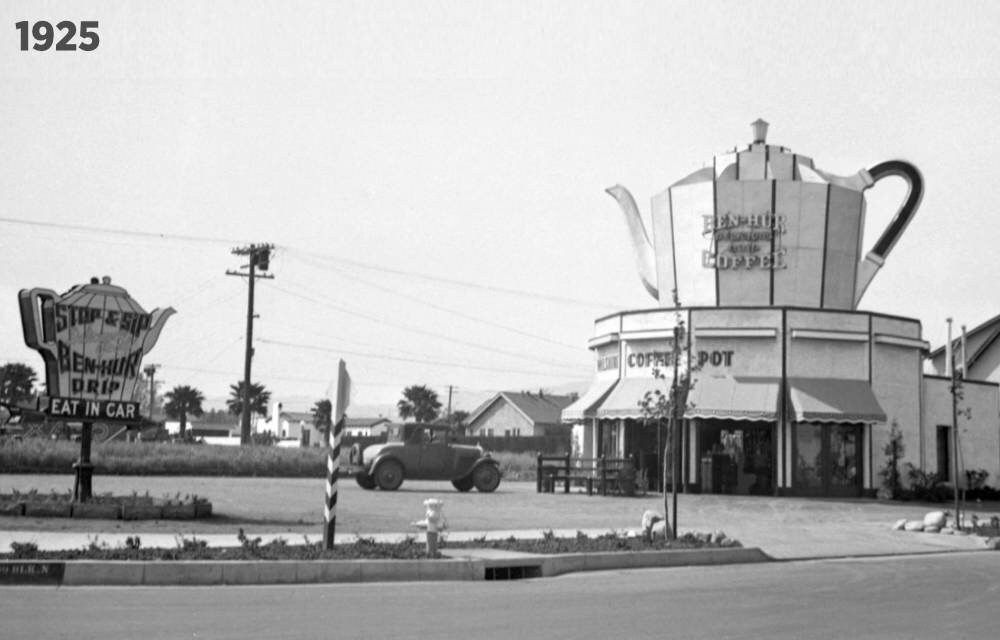
WILSHIRE COFFEE POT / 8601 Wilshire Boulevard - Decades before the first drive-thru Starbucks or AM PM Mini-Mart, the Wilshire Coffee Pot offered L.A.’s growing car culture quick access to caffeine. The Ben-Hur drip coffee they sold was an advertising tie-in for the popular 1925 silent film, but by the late 1940s, it was eclipsed by mass-market brands.
VAN DE KAMP’S BAKERY
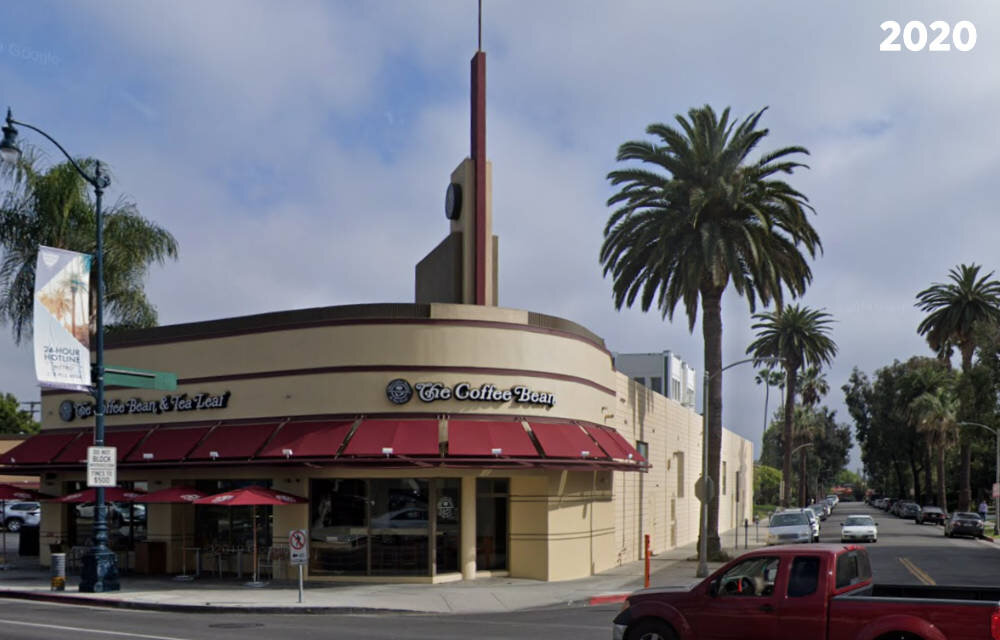
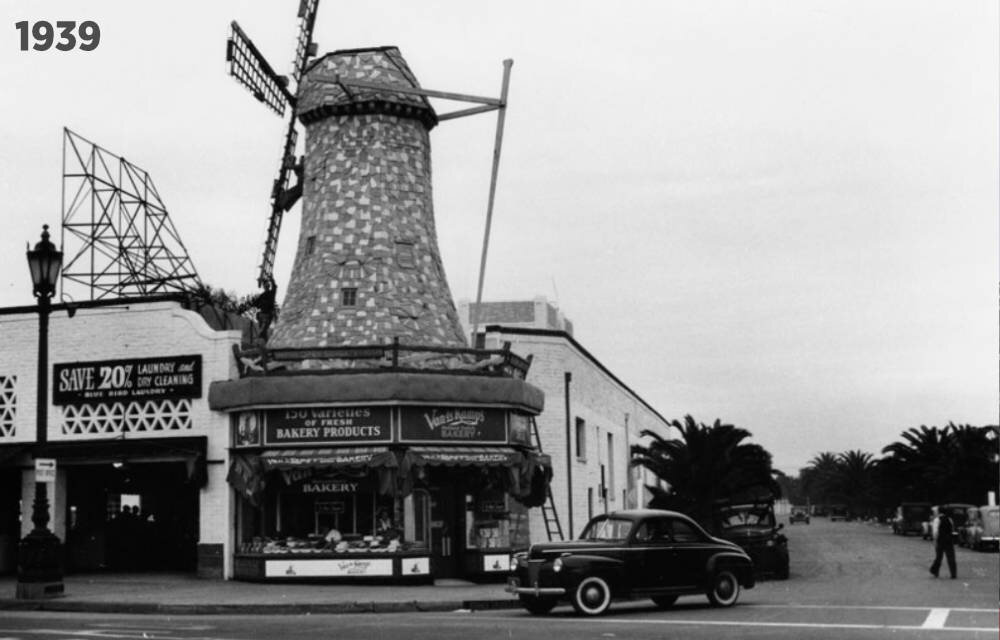
VAN DE KAMP’S BAKERY / 8328 Wilshire Blvd - In 1939, Ansel Adams took 217 photographs chronicling life in Beverly Hills. 20 years later, Adams rediscovered the photographs and sold them to the L.A. Public Library for $150. This view of Van de Kamp's Bakery on the southeast corner of Wilshire Boulevard and Tower Drive shows two workmen repairing the bakery's signature Dutch windmill.
ARMSTRONG-SCHRODER CAFE
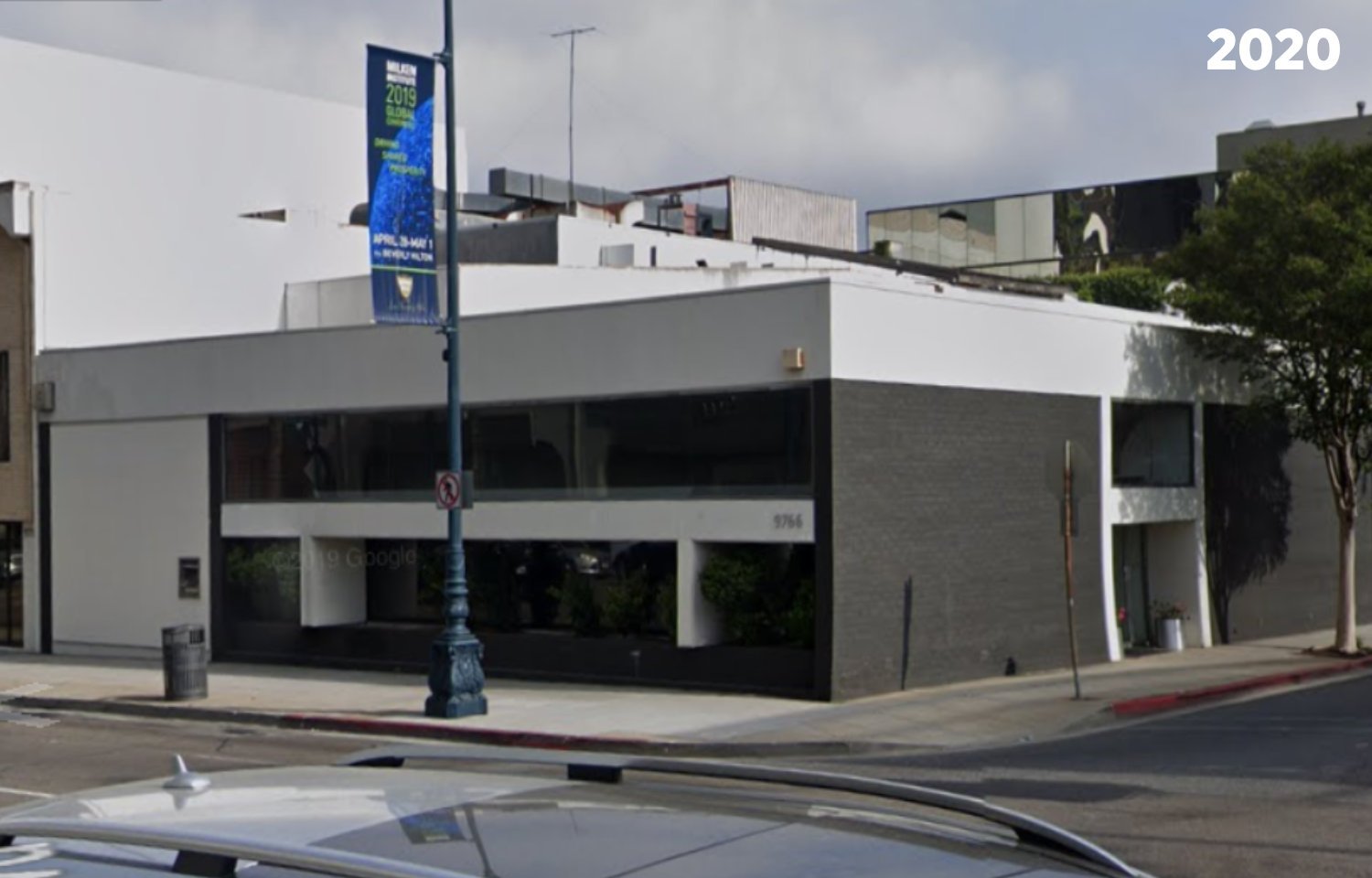
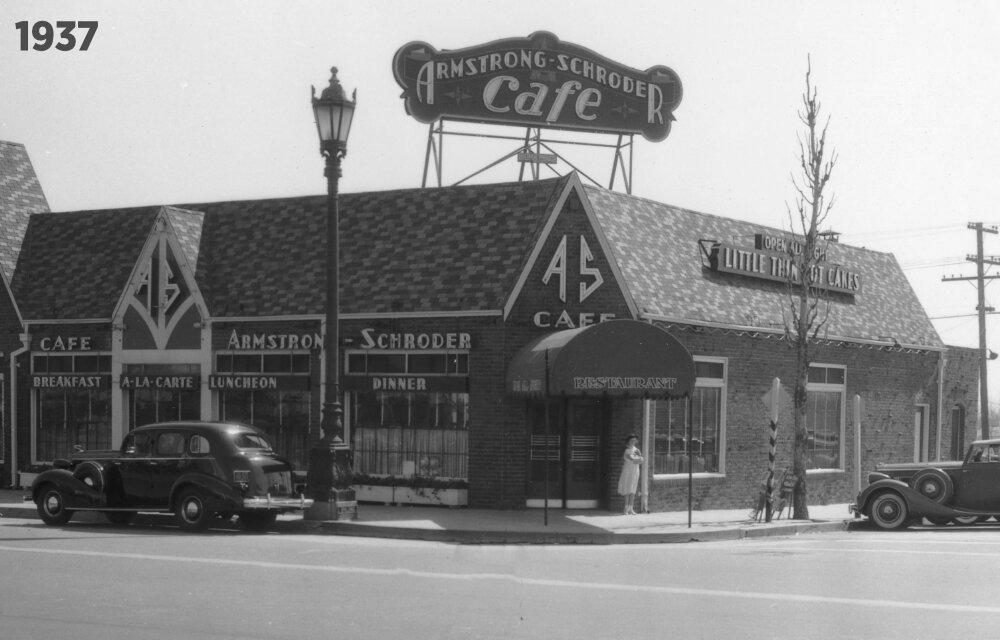
ARMSTRONG-SCHRODER CAFE / 9766 WILSHIRE BLVD - Armstrong-Schroder, with its wooden booths and linoleum floor, was known for its kippers and scrambled eggs. By the mid-‘60s, it was replaced with a sleek, modern building that was home to Nibbler’s Restaurant, a coffee shop with plush carpet and low lighting that became the hang-out for Beverly High School students.

